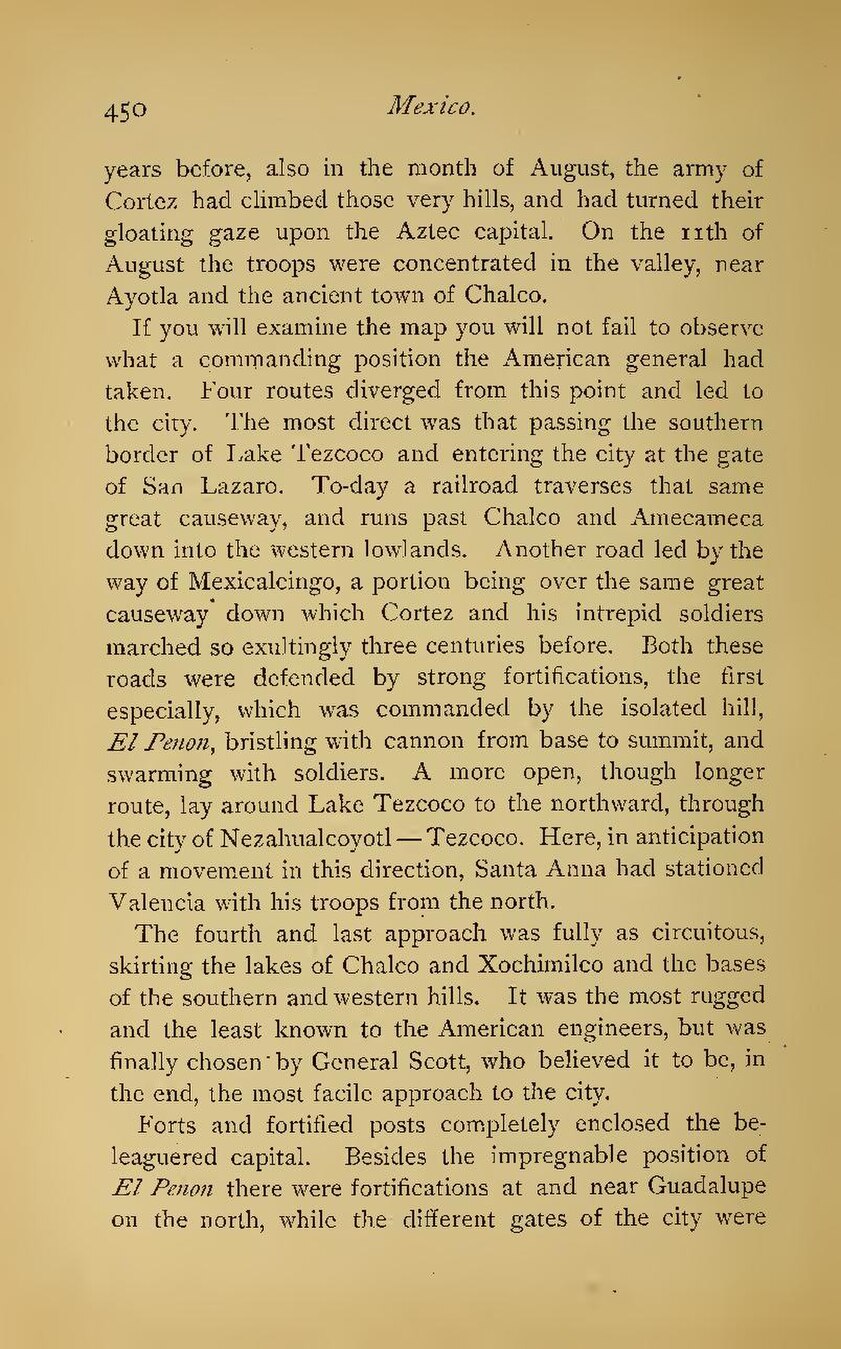years before, also in the month of August, the army of Cortez had climbed those very hills, and had turned their gloating gaze upon the Aztec capital. On the 11th of August the troops were concentrated in the valley, near Ayotla and the ancient town of Chalco.
If you will examine the map you will not fail to observe what a commanding position the American general had taken. Four routes diverged from this point and led to the city. The most direct was that passing the southern border of Lake Tezcoco and entering the city at the gate of San Lazaro. To-day a railroad traverses that same great causeway, and runs past Chalco and Amecameca down into the western lowlands. Another road led by the way of Mexicalcingo, a portion being over the same great causeway down which Cortez and his intrepid soldiers marched so exultingly three centuries before. Both these roads were defended by strong fortifications, the first especially, which was commanded by the isolated hill, El Penon, bristling with cannon from base to summit, and swarming with soldiers. A more open, though longer route, lay around Lake Tezcoco to the northward, through the city of Nezahualcoyotl—Tezcoco. Here, in anticipation of a movement in this direction, Santa Anna had stationed Valencia with his troops from the north.
The fourth and last approach was fully as circuitous, skirting the lakes of Chalco and Xochimilco and the bases of the southern and western hills. It was the most rugged and the least known to the American engineers, but was finally chosen by General Scott, who believed it to be, in the end, the most facile approach to the city.
Forts and fortified posts completely enclosed the beleaguered capital. Besides the impregnable position of El Penon there were fortifications at and near Guadalupe on the north, while the different gates of the city were
